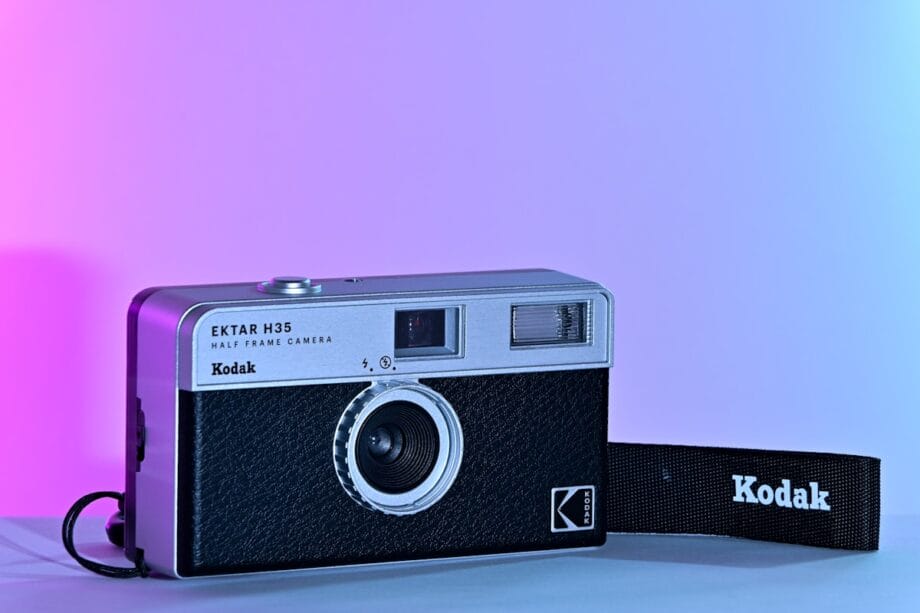The Resurgence of Kodak’s Legacy Through the Charmera
The Charmera range includes a design reminiscent of 1987, paying homage to the Kodak Fling.
February 1987 marked a pivotal moment in consumer camera technology as Japanese film giant Fujifilm prepared to unveil a revolutionary creation: the first mass-market disposable camera.
Having introduced the Quick Snap disposable in Japan in 1986, Fujifilm was primed for a global launch at a prominent U.S. photo industry trade show organized by the Photo Marketing Association.
Simultaneously, their principal rival, Eastman Kodak, had gleaned that Fujifilm was ramping up production from one million units to an alarming three to four million, surmising these additional units were intended for the American market.
Yet, Kodak had a surprise planned.
“Eastman Kodak Co. is set to introduce a $6.95 disposable camera named the Fling later this year,” reported UPI on February 19, just days prior to the Quick Snap’s grand reveal.
A vital detail soon surfaced: the Fling was not equipped for the standard 35mm film but rather the significantly smaller 110 film variant. The Kodak Fling lasted but two years before being succeeded by a 35mm version.
“It will target young consumers, travelers who may have left their cameras at home, and anyone who unexpectedly encounters a daylight photo opportunity,” remarked Peter Palermo, Kodak’s consumer products manager, in the same article.
Kodak announced the Fling without a tangible prototype, yet it did indeed become available later that year. Featuring a compact design similar in size to a carton of 110 film, the camera’s simple plastic body was encased in a cardboard sleeve, easily fitting into the tightest pockets.
However, the diminutive film format posed a challenge: producing larger prints from its negatives became a cumbersome task.
The Fling remained on the market for just two years before Kodak phased it out in favor of a 35mm variant. Subsequently, the high-stakes competition between Kodak and Fujifilm would revolve around 35mm cameras alone.
In light of rising public scrutiny over disposable items, Kodak rebranded the Fling as the “Fun Saver”. Fast forward four decades, and both Kodak and Fujifilm continue to produce disposable cameras, capturing the hearts of a new generation eager to explore their carefree allure.
The Fling—a camera meant for a single use—quickly faded into obscurity. Yet, almost 40 years after its initial foray, its spirit has been revitalized in the form of the highly sought-after digital camera of 2025. The unassuming specifications of the Charmera have not hindered its remarkable success.
The Kodak Charmera emerges as a remarkably compact digital camera, crafted by Hong Kong-based photographic brand Reto, known for other triumphs such as the Kodak Ektar H35N and the revival of the Ultra Wide & Slim camera.
Announced on September 9, this miniature marvel easily attaches to a keyring and features a 1.6MP 1/4 inch sensor. Capable of capturing both photos and videos, it also offers an assortment of filters to enhance images; one even replicates film borders.
The Charmera marries its petite design with elements of exclusivity. Reto has tapped into the burgeoning “blind box craze,” providing consumers with seven distinct designs, the actual model remaining hidden until the box is opened.
A standout edition—a clear model showcasing the camera’s inner mechanics—was kept under wraps until its unveiling.
This limited edition, priced at £30, has become an overnight sensation, with retailers worldwide rapidly exhausting their stock shortly after shelves were restocked. Coverage from Digital Camera World highlights Charmera’s release.

One edition of the Charmera, adorned with vibrant yellow packaging, prominently features “1987”—the year the Kodak Fling was launched. As Reto Vivienne Tsang indicated to Kosmo Foto, this alignment is intentional.
“Indeed, the design of the Kodak Charmera draws inspiration from the Kodak Fling, the brand’s inaugural single-use camera created in the ’80s. Our aim is to revive that spirit in a collectible format, utilizing a blind box approach that resonates with contemporary culture,” she explained.
“The Fling, characterized by its 110 format and compact nature, epitomized Kodak’s legacy in rendering photography enjoyable and accessible. With our keychain digicam, we aspire to underscore its portability while infusing an element of fun.”
The Charmera reflects how a thoughtful homage to classic designs can yield significant rewards. Flawless specifications are not a prerequisite for its target demographic, who are not inclined toward technical scrutiny.
In an era where usable digital cameras are as small as a 110 roll of film, why not pay tribute to the past? This renewed focus returns attention to Kodak’s first quirky disposable camera, an intriguing chapter in the annals of the U.S. film titan’s illustrious journey.
Source link: Kosmofoto.com.






